El Salvador Christmas 2005
I came to El Salvador with trepidation fuelled by tales of bandits and expecting a degree of hostility towards tourists and the likelihood that I would be exploited or robbed.
What I found both inspired me and gave me cause for reflection. El Salvador is a country of contrasts.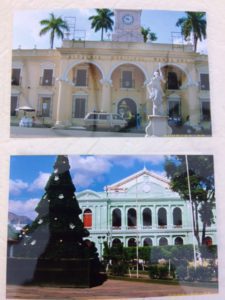
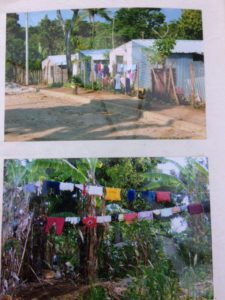
Its people are emerging from a bloody civil war that terminated with the Peace Accords. The cause of the war was to gain a more even distribution of land as El Salvador (about the size of Wales in the UK) is densely populated. Religion here is laced with social justice. We visited Archbishop Romero’s grave.
The loss of family members would have been in the life experience of all the people we met and yet even among the poorest communities there seemed to be a genuine level of happiness and contentment. You also experience a visual sense of community which may be residual from some of the solidarity movements in the 80s and 90s. Cooking, washing, labouring in the fields all appear as group activities.
In the city people live in walled enclosures topped with metres of vicious looking barbed wire. Security guards with guns are everywhere, but they don’t point them at you. The customs official at Houston when we made our transfer was the most officious and intimidating person I met on the entire trip, finger printing me, photographing my irises and insisting that I state exactly what sort of clothes I was taking on my holiday trip.
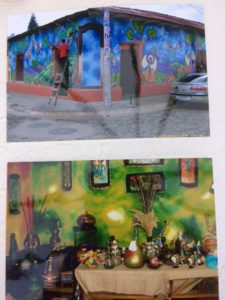
Many Salvadorans aspire to be North Americans, to eat fast food and shop in giant malls and they are to be found in San Salvadore, swarming with people.
For me to escape fast food was a delight. The chicken tastes great, probably because they get to run around and have a life before they get eaten – fresh fish, rice, beans, salad and every kind of fruit imaginable. Tortillas didn’t really do it for me, but pupusas were the salvadoran equivalent to chips.
Once I got past the stereotype of every Salvadoran male looking like a baddie in American films, I began to appreciate the male physique there. The men age well and are in general incredibly fit with fantastically white, even teeth. The women are mainly petite, gloriously curvy with huge brown eyes, glossy hair and again, smiles to die for. They smile all the time. Pleasantries and greetings are exchanged with everyone.
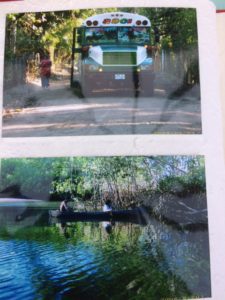
El Salvador has a way to go on waste disposal. The river in San Salvadore was choked with garbage and the sides of the road were littered indiscriminately, yet in this tiny country you have cloud forest teeming with colourful birds and small mammals, Pacific Ocean beaches untouched by tourist development and everywhere, including amidst the shacks, abundant tropical flowers of vivid colours growing wild, plus flowering trees, coconut palms, nuts, bananas. The volcanic soil is fertile.
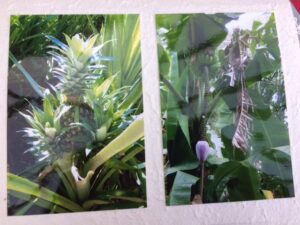
There are many geological and man made landmarks – the volcanoes, the mayan ruins, churches, colonial style towns, lakes, mangrove swamps. There’s a lot to explore.
Our vision for Can Do Freedom travel (for which our visit was a scouting exercise) was to create tours that allow visitors to experience the contrasts and to support local businesses keen to share the beautiful and unique aspects of their country. Every tour in El Salvador intended to make a contribution to a self-build project at San Jose del Congo which rehoused families into brick-built homes in sustainable villages. At that time they cost $6,500 for one single room with verandah and an outside latrine. Wages were $38 a week in the factories. We never got there for a multitude of reasons, but companies like Intrepid go some way. The only issue I have with them is that they are beginning to build their own accommodation in remoter places because tourists are so particular about facilities.
El Salvador was the only place I have seen large groups of grey pelicans on the beach.

